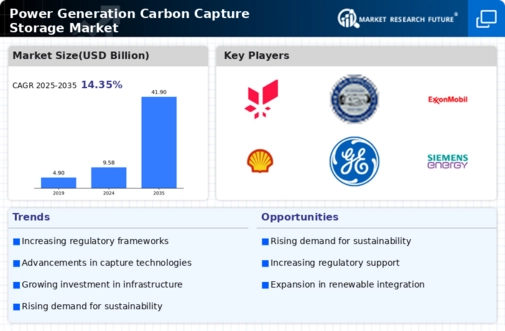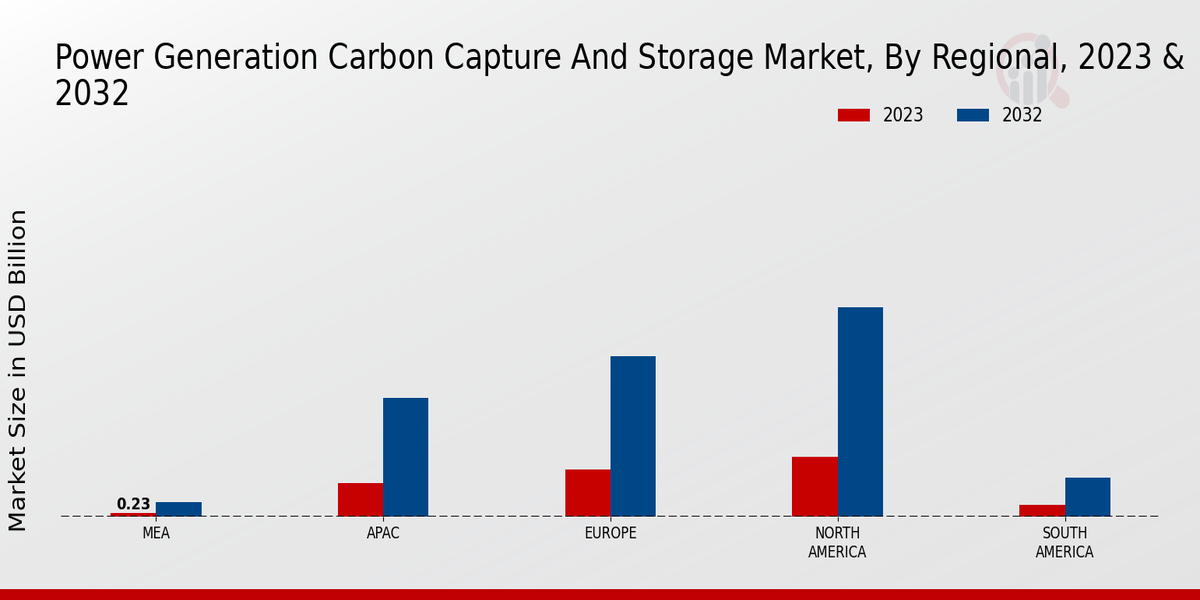Corporate Sustainability Commitments
Corporate sustainability commitments are increasingly influencing the Power Generation Carbon Capture Storage Market. Many corporations are setting ambitious targets to achieve net-zero emissions, which necessitates the integration of carbon capture technologies into their operations. This trend is evident as major energy companies allocate substantial resources towards developing and implementing carbon capture solutions. Reports indicate that over 50% of Fortune 500 companies have established sustainability goals that include carbon capture initiatives. As these corporations seek to enhance their environmental performance, the demand for carbon capture technologies is expected to rise, further driving the growth of the Power Generation Carbon Capture Storage Market.
Technological Innovations in Carbon Capture
Technological innovations in carbon capture are significantly shaping the Power Generation Carbon Capture Storage Market. Advancements in capture methods, such as direct air capture and bioenergy with carbon capture and storage (BECCS), are enhancing the efficiency and cost-effectiveness of carbon capture processes. The development of new materials and processes is expected to reduce the cost of capturing carbon dioxide by up to 50% in the coming years. These innovations not only improve the feasibility of carbon capture projects but also attract investments from both public and private sectors, thereby accelerating the growth trajectory of the Power Generation Carbon Capture Storage Market.
Government Incentives and Funding Initiatives
Government incentives and funding initiatives play a crucial role in propelling the Power Generation Carbon Capture Storage Market. Various governments have introduced financial support mechanisms, including tax credits and grants, to encourage the adoption of carbon capture technologies. For instance, the implementation of the 45Q tax credit in the United States has incentivized investments in carbon capture projects, leading to an estimated increase in capacity by 30% over the next five years. Such initiatives not only enhance the economic viability of carbon capture projects but also stimulate innovation within the industry, thereby fostering a favorable environment for growth.
Increasing Demand for Low-Carbon Energy Solutions
The rising demand for low-carbon energy solutions is a primary driver for the Power Generation Carbon Capture Storage Market. As nations strive to meet climate targets, the transition from fossil fuels to cleaner energy sources becomes imperative. This shift is reflected in the increasing investments in carbon capture technologies, which are projected to reach USD 10 billion by 2027. The urgency to reduce greenhouse gas emissions has led to a surge in projects aimed at capturing carbon dioxide from power generation facilities. Consequently, the Power Generation Carbon Capture Storage Market is likely to experience robust growth as stakeholders seek to implement effective carbon management strategies.
Growing Public Awareness and Support for Climate Action
Growing public awareness and support for climate action are driving forces behind the Power Generation Carbon Capture Storage Market. As communities become more informed about the impacts of climate change, there is an increasing demand for solutions that mitigate carbon emissions. Public support for carbon capture technologies is evident in various surveys, indicating that a significant majority of the population favors investments in carbon capture as a means to combat climate change. This societal shift is prompting policymakers and industry leaders to prioritize carbon capture initiatives, thereby creating a conducive environment for the expansion of the Power Generation Carbon Capture Storage Market.


















Leave a Comment